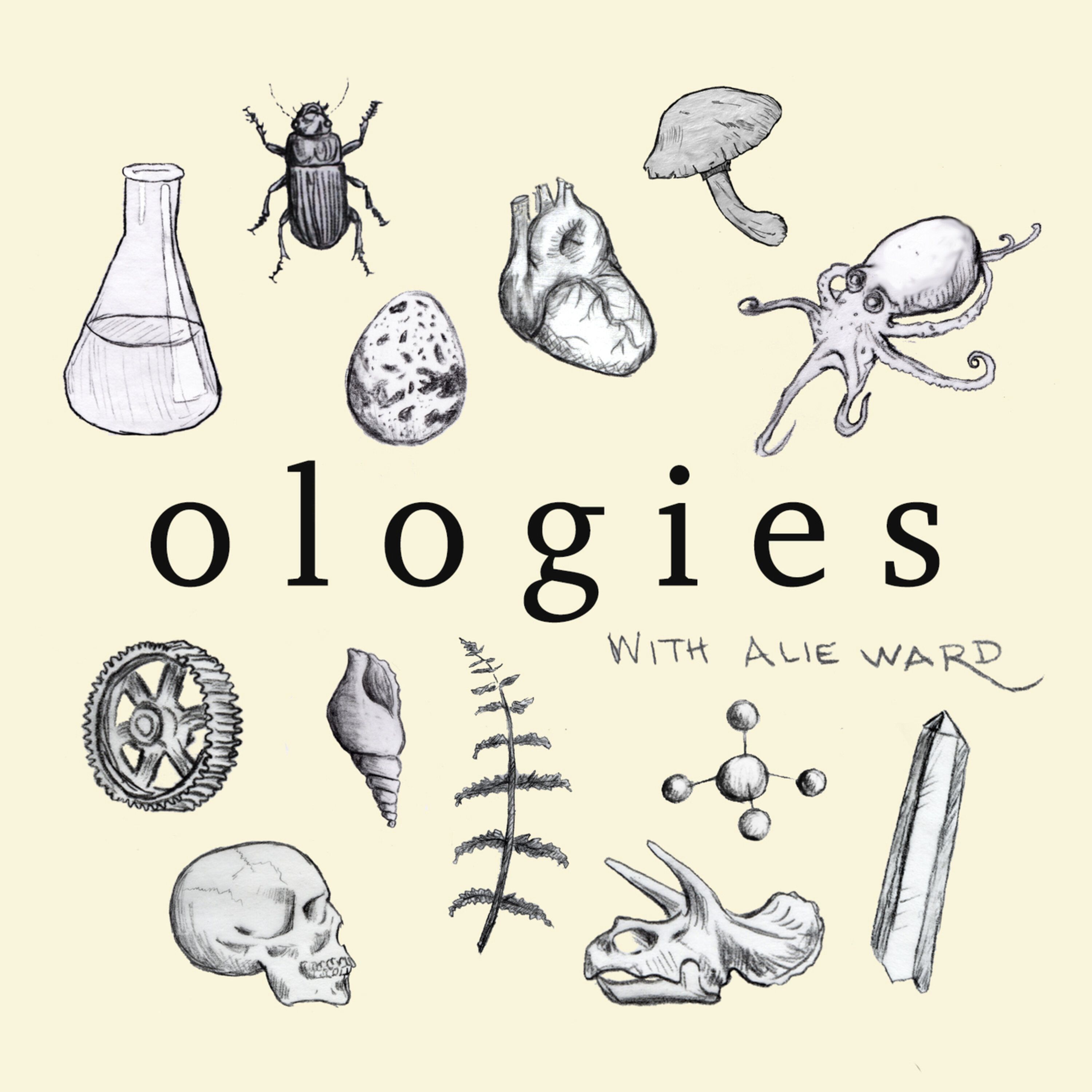
Canistrumology (BASKET WEAVING. YES, BASKET WEAVING) with James C. Bamba

Ologies with Alie Ward
Key Insights
Why did James C. Bamba start weaving baskets?
James was introduced to basket weaving by his uncle, who made a coconut leaf basket for his grandmother as a get-well gift. The beauty of the basket intrigued James, leading him to learn the craft from his uncle.
How does James C. Bamba describe the traditional Chamorro teaching method?
James describes traditional Chamorro teaching as hands-off and observational, where the teacher demonstrates without much explanation, expecting the student to figure out the details through observation and practice.
What challenges does James C. Bamba face in his weaving practice?
James faces challenges such as people questioning his techniques, doubting the value of his work, and the decline of natural materials due to climate change.
How does James C. Bamba feel about non-Indigenous people learning traditional weaving techniques?
James believes that if a practitioner accepts a non-Indigenous person as a student, it is their prerogative to teach. He emphasizes the importance of intentions and respect for the craft.
What materials does James C. Bamba primarily use for his weaving?
James primarily uses pandanus leaves (aggek) and coconut leaves, though he has also experimented with bamboo and certain vines.
How does James C. Bamba prepare coconut leaves for weaving?
James selects different parts of the coconut tree for different uses, with younger leaves (bina) being softer and better for finer work and older leaves being stiffer for structural purposes. He also treats the leaves by wilting them in the sun and drying them to achieve the desired pliability.
What is James C. Bamba's favorite part about weaving?
James's favorite part about weaving is seeing his students and apprentices excel and innovate with the techniques they learn from him, as it helps continue the tradition and brings him great pride.
How does James C. Bamba address the issue of underwater basket weaving?
James clarifies that underwater basket weaving is a myth and not a real practice. He finds it frustrating when people joke about it, as it belittles the skill and effort involved in traditional weaving.
What impact does climate change have on James C. Bamba's weaving materials?
Climate change affects the availability of weaving materials like pandanus and coconut leaves, as rising tides are shrinking coastlines and changing the habitats where these plants grow.
How does James C. Bamba make his baskets watertight?
James makes his baskets watertight by sizing the leaves, weaving them tightly at a precise angle, and allowing the leaves to wilt and dry out partially before retightening the weave. The natural swelling of the leaves when wet further seals the gaps.
Chapters
- James was born in Scotland and moved around due to his father's military service.
- He first learned about weaving from his uncle, who made a basket for his grandmother.
- Traditional Chamorro teaching methods are hands-off and focus on observation and trial and error.
Shownotes Transcript
Thorny leaves! Embarrassing imports! Basket gossip! Making cool stuff from invasive vines! Renowned weaver and teacher, James C. Bamba, connected more deeply with his Mariana Island heritage through weaving and shares how you know when plant fiber is ready, the anatomy of a coconut tree, how to look a gift basket in the mouth, the baskets that he cherishes the most, how to design with your mind, what he thinks about when he’s weaving, basket jokes he hates the most, and when learning another culture’s craft is appropriate or appropriation.
Follow James on Instagram)
A donation went to Sagan Kotturan Chamoru)
More episode sources and links)
Smologies (short, classroom-safe) episodes)
Other episodes you may enjoy: Ethnoecology (ETHNOBOTANY/NATIVE PLANTS)), Dendrology (TREES)), Indigenous Fashionology (NATIVE CLOTHING)), Indigenous Cuisinology (NATIVE COOKING)), Indigenous Pedology (SOIL SCIENCE)), Heliology (THE SUN/ECLIPSES)), Neuroendocrinology (SEX & GENDER)), Ergopathology (BURNOUT)), Corvid Thanatology (CROW FUNERALS))
Transcripts and bleeped episodes)
Become a patron of Ologies) for as little as a buck a month
OlogiesMerch.com) has hats, shirts, hoodies, totes!
Follow Ologies on Instagram) and Bluesky)
Follow Alie Ward on Instagram) and TikTok)
Editing by Mercedes Maitland of Maitland Audio Productions) and Jake Chaffee)
Managing Director: Susan Hale
Scheduling Producer: Noel Dilworth
Transcripts by Aveline Malek
Website by Kelly R. Dwyer)
Theme song by Nick Thorburn
